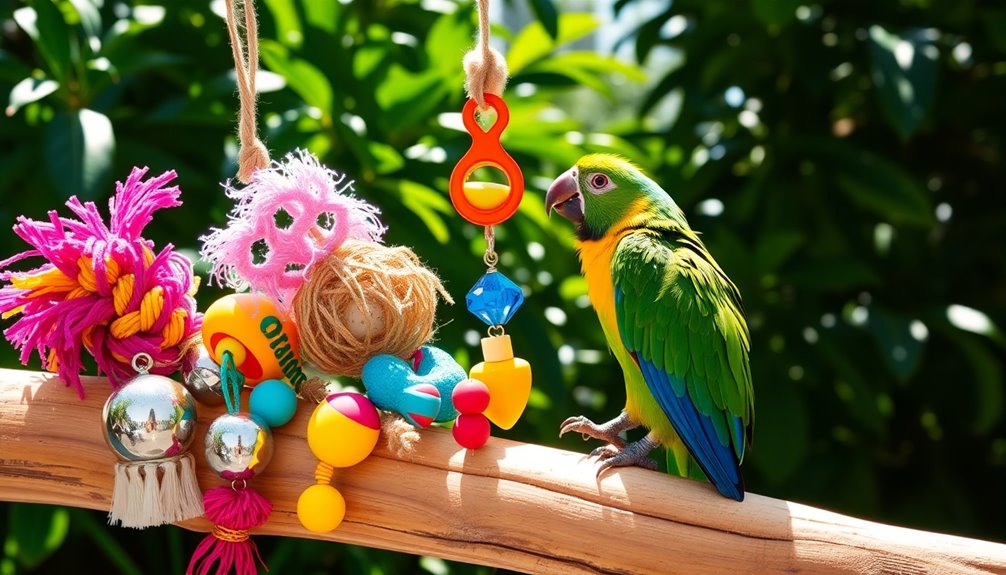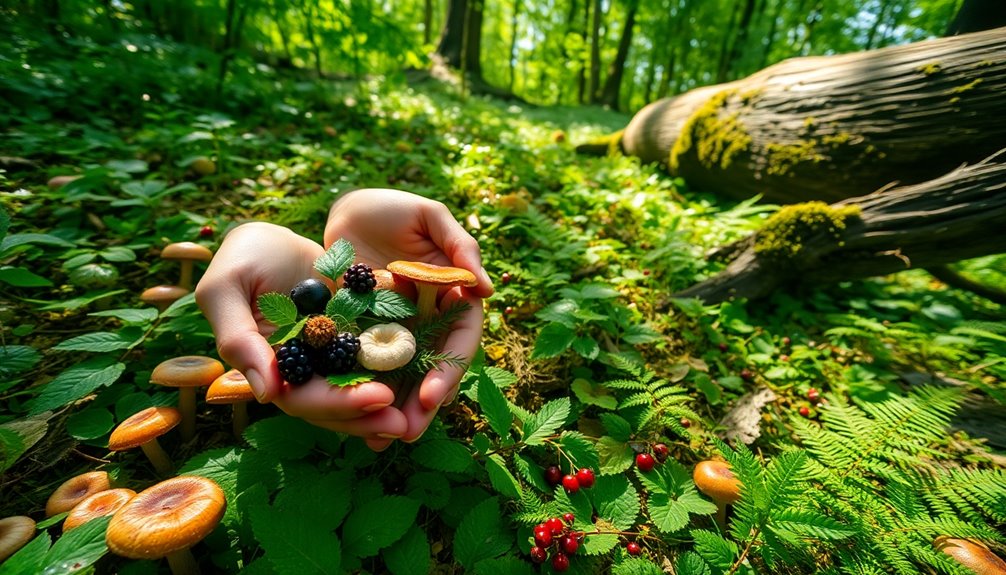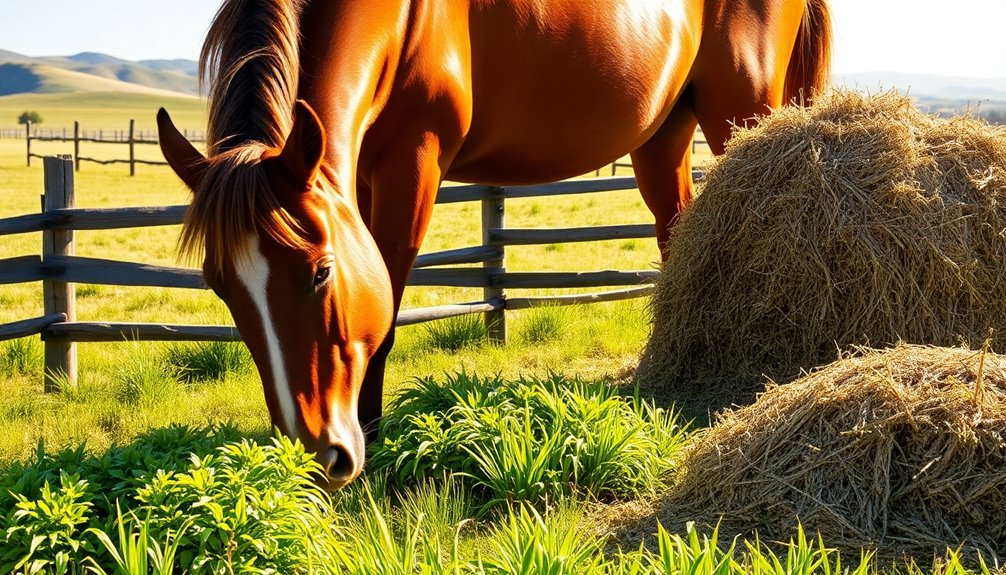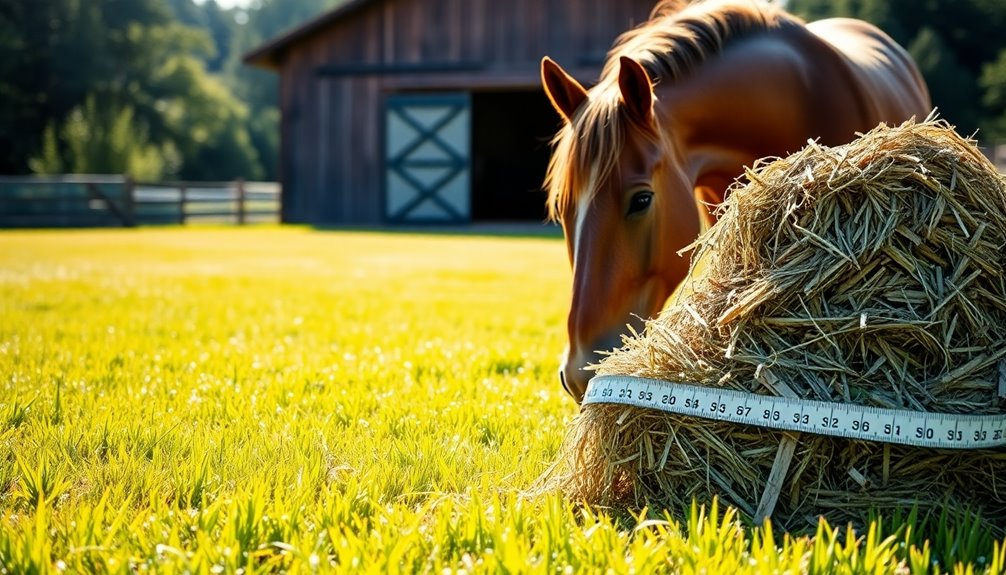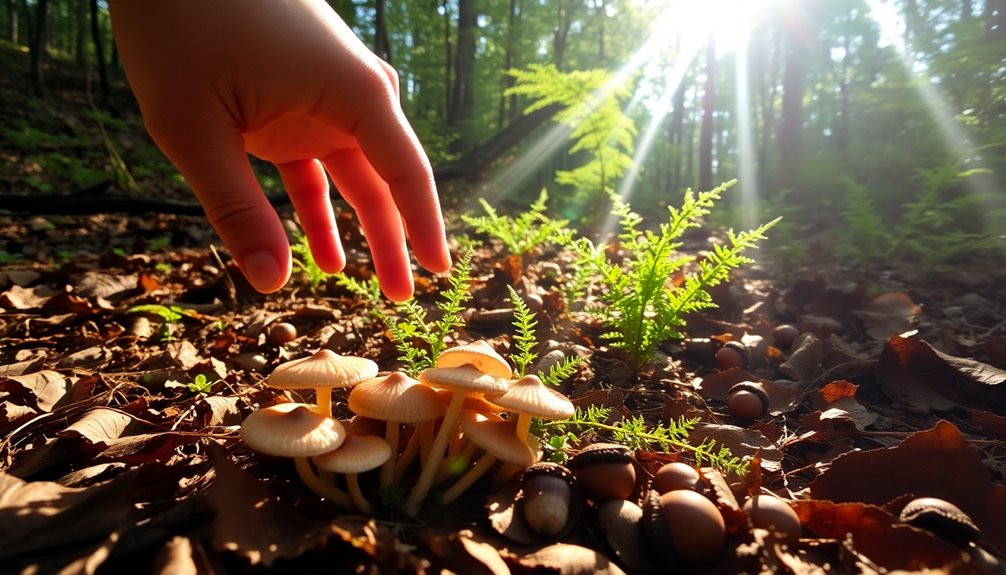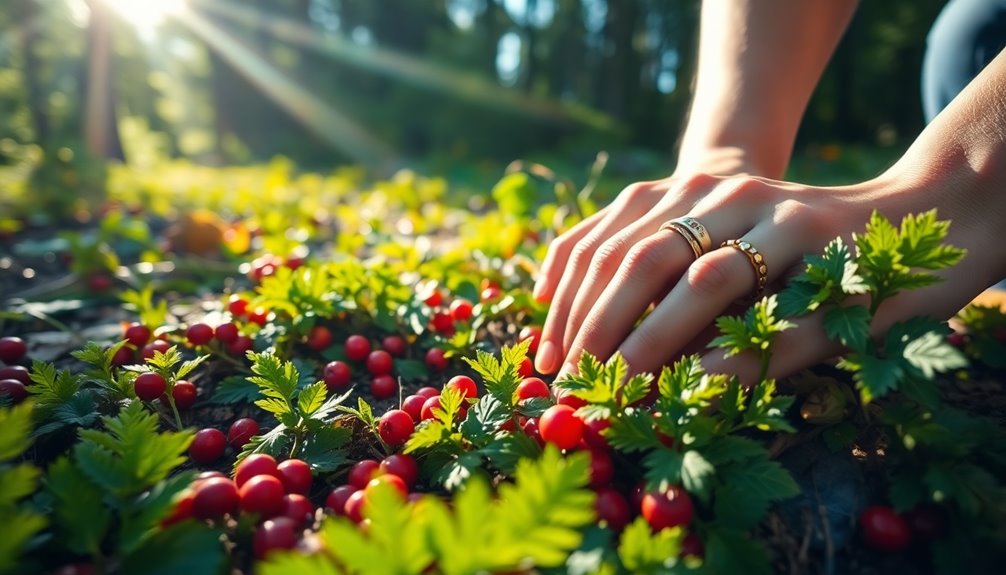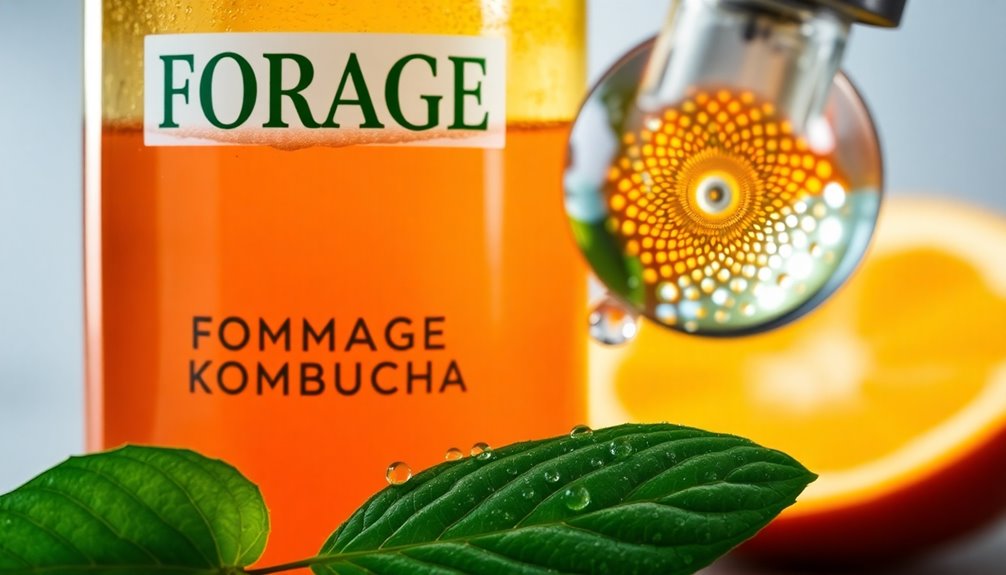Foraging toys for parrots are fantastic tools that help keep your bird happily busy and mentally stimulated. These toys, designed to mimic natural foraging activities, encourage your parrot to explore, problem-solve, and engage physically. You'll find them in various forms like puzzle feeders, hanging toys, and manipulable containers. Regular rotation of these toys prevents boredom and anxiety, making for a happier pet. Whether you opt for homemade options or commercial products, ensuring they're durable and safe is key. Curious about the types and benefits of specific foraging toys? There's more to explore on this topic!
Key Takeaways
- Foraging toys stimulate parrots' natural foraging instincts, promoting mental and physical exercise essential for their well-being.
- These toys come in various forms, including puzzle feeders and manipulable containers, to keep your bird engaged.
- Regularly rotating foraging toys prevents boredom and encourages exploration, ensuring continued interest from your parrot.
- They enhance problem-solving skills and cognitive engagement, contributing to a happier and healthier bird.
- Safe and durable, effective foraging toys should match the bird's species and be regularly maintained for ongoing safety.
Understanding Foraging Toys
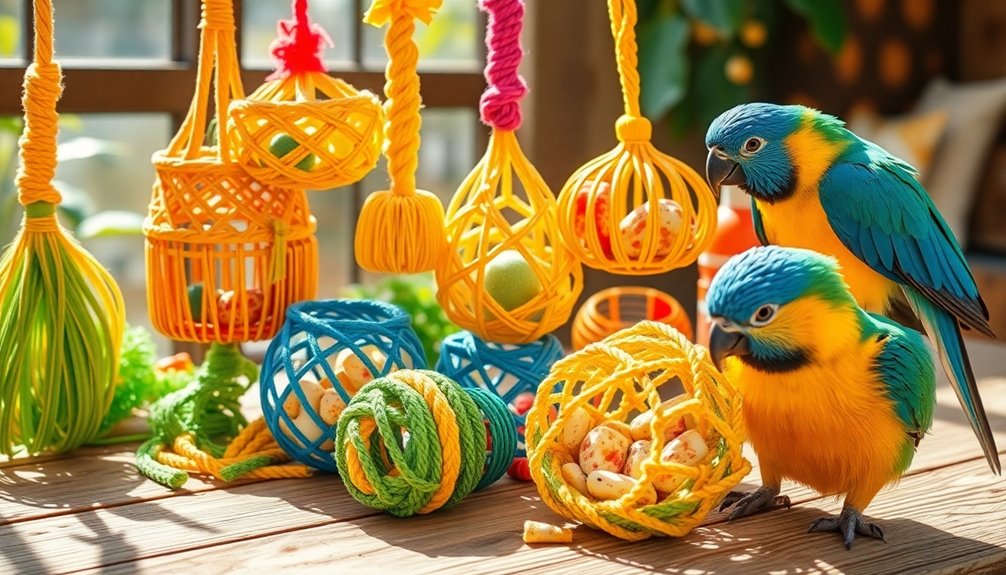
Understanding foraging toys is essential for any parrot owner looking to enrich their pet's life. These toys are specifically designed to stimulate your parrot's natural foraging instincts, encouraging them to search for hidden treats just like they'd in the wild.
You'll find foraging toys in various forms, such as puzzle feeders, hanging toys, and containers that require manipulation to access food. This variety promotes both mental and physical exercise for your feathered friend.
Incorporating foraging toys into your parrot's environment helps reduce boredom and anxiety by providing engaging activities that keep them actively occupied. To maintain your parrot's interest, it's important to regularly introduce new foraging toys and rotate existing ones. This practice prevents habituation and keeps your pet excited about playtime.
Moreover, foraging toys promote problem-solving skills and cognitive engagement, which are essential for your parrot's overall health and well-being. By offering these stimulating toys, you're not just entertaining your bird; you're also contributing to a happier, healthier life.
Benefits of Foraging Toys
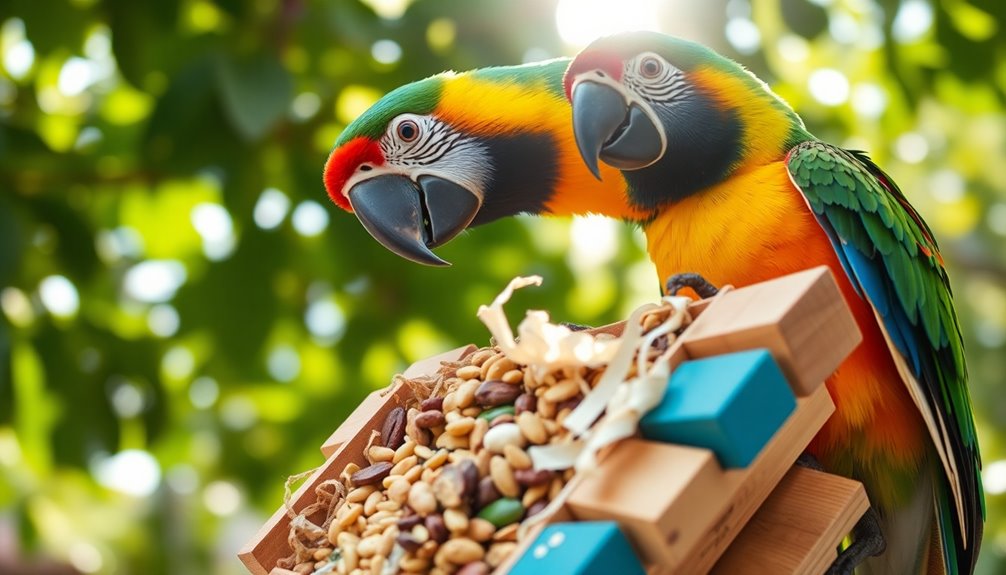
What makes foraging toys so beneficial for parrots? Foraging toys stimulate your bird's natural behaviors, promoting essential mental and physical exercise. By engaging with these toys, your parrot can reduce boredom and anxiety, leading to a happier, less stressed companion.
These toys encourage your parrot to develop problem-solving skills. As they manipulate the foraging toy to access hidden treats, they enhance their cognitive function, keeping their minds sharp.
Regular interaction with foraging toys contributes to better overall health, as it promotes activity and reduces sedentary behavior.
Moreover, using a variety of foraging toys prevents habituation. When you switch up the toys, your parrot remains interested and engaged over time. This constant mental stimulation plays a crucial role in their well-being.
Types of Foraging Toys
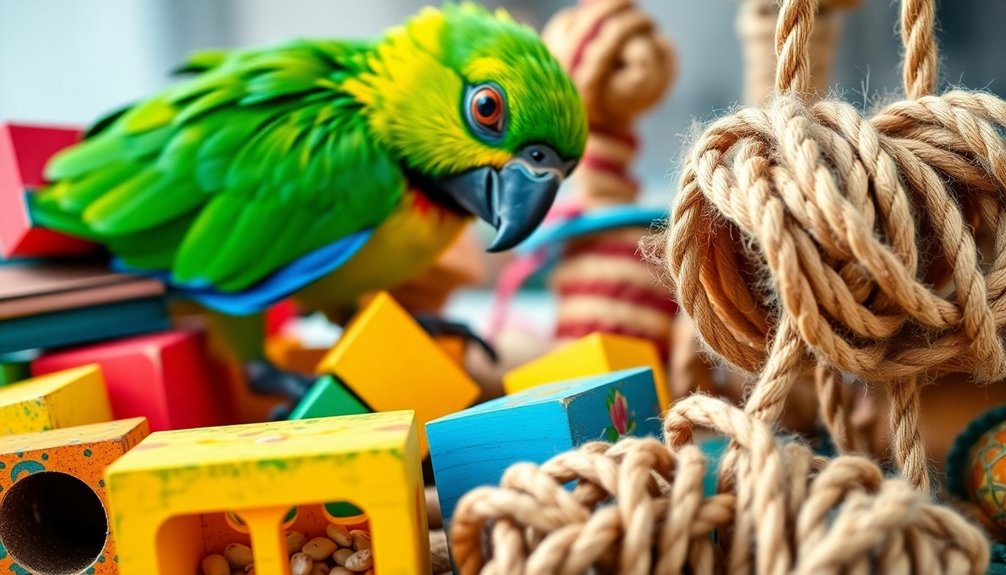
Foraging toys come in a variety of shapes and designs, each catering to the unique instincts and behaviors of parrots. You'll find options ranging from homemade creations like unbleached Dixie cups and paper egg cartons to commercial products such as foraging wheels and barrel toys.
These toys are specifically designed to engage your bird's natural instincts, making mealtime fun and stimulating.
Puzzle toys and hanging toys are particularly popular among bird owners. They require your parrot to manipulate the toy to access food, providing mental stimulation and physical exercise.
Interactive gadgets like the EleWaiter and Busy Barrel offer innovative ways for your bird to retrieve treats, enhancing problem-solving skills while keeping them entertained.
Mini foraging cups and containers, such as the Mini Red Plastic Foraging Cup and Jumbo Paper Straws, can be stuffed with crinkle paper or seeds, creating simple yet effective foraging activities.
Remember, variety is essential! Rotating different types of foraging toys keeps your feathered friend engaged and prevents boredom, ultimately leading to improved overall health and well-being.
Creative Homemade Foraging Ideas
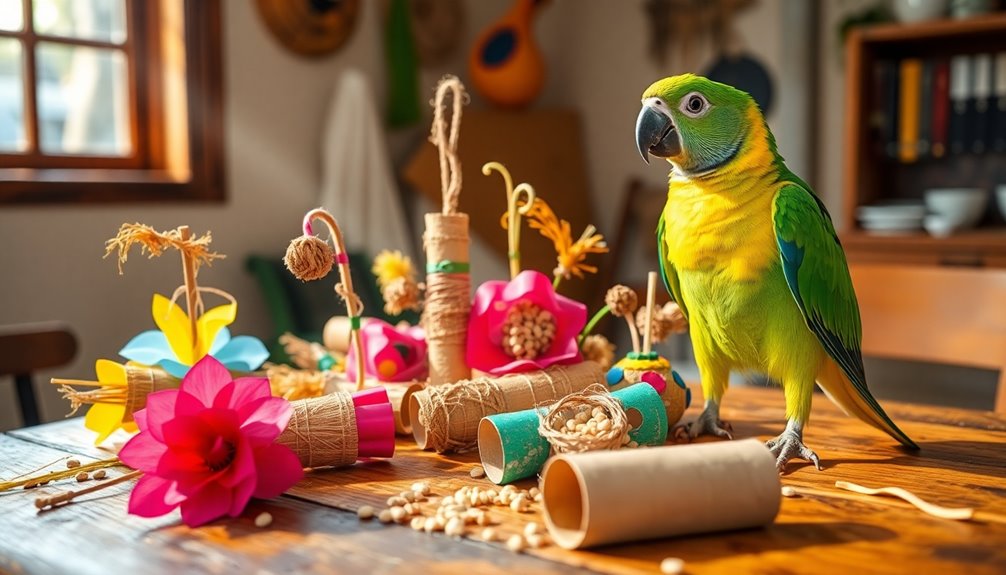
Crafting homemade foraging toys can be a fun and rewarding way to keep your parrot entertained and mentally stimulated. Here are some creative ideas that'll engage your bird and promote natural foraging behavior:
| Foraging Toy Idea | Description |
|---|---|
| Unwaxed Dixie Cups | Fill them with treats to encourage exploration. |
| Repurposed Paper Egg Cartons | Hide food inside for a versatile foraging puzzle. |
| Wicker Baskets | Stuff with non-perishable treats and shreddable material. |
You can also use colorful paper straws stuffed with crinkle paper or seeds, providing an engaging experience for birds of all sizes. Consider setting up treasure hunts by hiding treats in shredded paper or grass around your bird's cage. This not only extends their feeding time but also enhances their mental stimulation.
Commercial Foraging Toys Overview
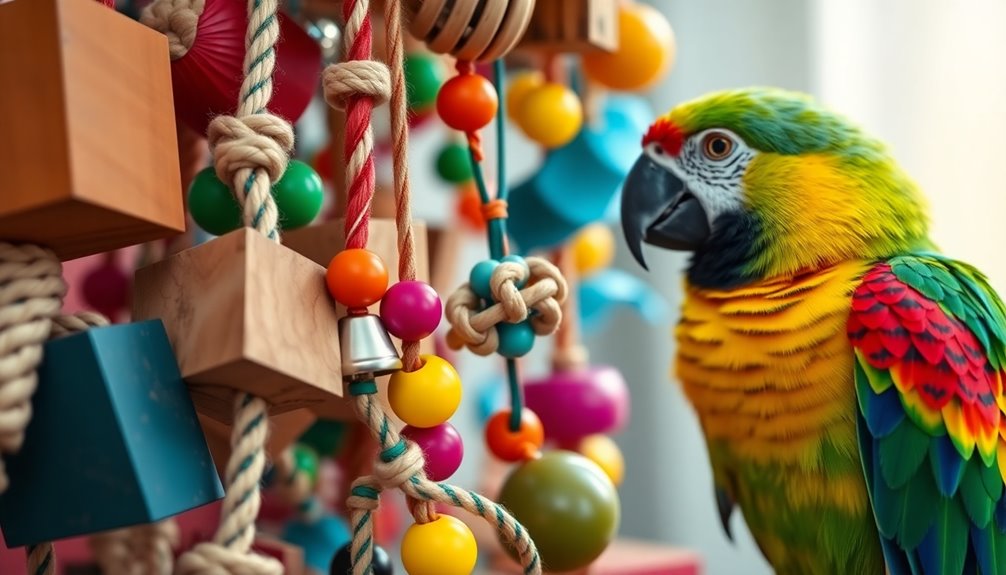
Homemade foraging toys can be a great way to spark your parrot's interest, but commercial options offer even more variety and engagement. These foraging toys are designed specifically to enhance your bird's natural behaviors while providing substantial mental engagement.
For instance, the Super Bird Creations Four Way Forager features multiple clear cups that encourage your parrot to retrieve treats, mimicking wild foraging habits.
The Foraging Freddie by The Leather Elves includes a coconut half and legs filled with leather and wood slices, perfect for hiding non-perishable treats for medium-sized birds.
If you're looking for something interactive, the Busy Barrel is an aluminum toy that invites your bird to engage in foraging activities with its 2.5-inch diameter.
The Platinum Tweeter Foraging Feeders are made from robust plastic and stimulate natural foraging behavior, making them suitable for medium to large birds.
Lastly, the EleWaiter by Busy Bird Toys requires your parrot to perform multiple revolutions to access its treats, promoting both mental and physical engagement.
With such diverse options, you're sure to find the perfect foraging toy to keep your feathered friend happily busy!
Features of Effective Foraging Toys
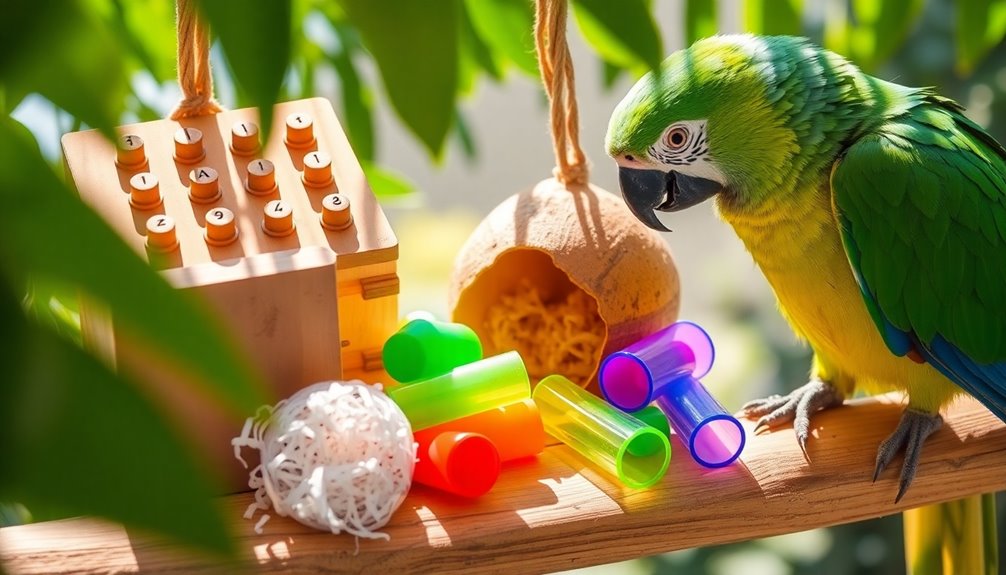
When choosing effective foraging toys, you need to take into account durability and safety standards to guarantee they can withstand your parrot's strong beak and are made from non-toxic materials.
It's also important to match the toy's size and design to your bird's species for maximum engagement.
Finally, offering a variety of toys can keep your parrot mentally stimulated and encourage natural foraging behaviors.
Durability and Safety Standards
Effective foraging toys must meet stringent durability and safety standards to guarantee your parrot's well-being. When choosing toys, you want to make certain they can withstand your parrot's strong beak while being made from non-toxic materials. This helps avoid any harmful substances that could affect your bird's health.
Here are some key features to look for:
- Durable Materials: Opt for toys made from sturdy materials to withstand biting and chewing.
- Non-toxic Construction: Make certain all components are bird-safe and free from harmful chemicals.
- Regular Maintenance: Check toys regularly for wear and tear; damaged toys can pose hazards.
- Variety of Textures: Choose toys that incorporate different textures to engage your parrot's senses.
- Size Appropriateness: While not the focus here, make certain toys fit your bird properly to avoid choking hazards.
Size and Species Suitability
How can you guarantee your parrot's foraging experience is both engaging and safe? Start by selecting foraging toys that are appropriately sized for your bird's species. Larger birds, like macaws and cockatoos, need sturdier toys made from durable materials to withstand their powerful beaks.
On the other hand, smaller birds, such as budgies and lovebirds, can thrive with lighter, less robust toys that they can easily manipulate.
It's essential to understand that effective foraging toys should cater to different skill levels. Provide options for both novice and advanced foragers, allowing your bird to gradually face new challenges as they develop their foraging skills.
Additionally, verify all materials used in these toys are non-toxic and bird-safe. Natural wood, paper, and certain plastics are excellent choices, keeping your feathered friend healthy.
Regularly rotating foraging toys is also important for maintaining interest. By having a variety of toys suited for different sizes and species, you can keep your parrot happily busy and engaged, guaranteeing a fulfilling and safe foraging experience.
Variety and Engagement Factors**
Foraging toys are essential for keeping your parrot mentally stimulated and engaged. The right toys not only promote natural behaviors but also encourage your feathered friend to explore their instincts.
Here are some key features to look for in effective foraging toys:
- Variety of Materials: Choose toys made from different textures to enhance sensory engagement.
- Durability: Verify toys are made from non-toxic, sturdy materials suitable for your bird's size.
- Difficulty Levels: Incorporate varying challenges, like simple treat dispensers or complex puzzle boxes, to prevent boredom.
- Regular Rotation: Change out toys frequently to maintain interest and keep your parrot mentally engaged.
- Interactive Elements: Look for toys that require your parrot to solve problems or manipulate components for rewards.
Foraging Techniques for Engagement
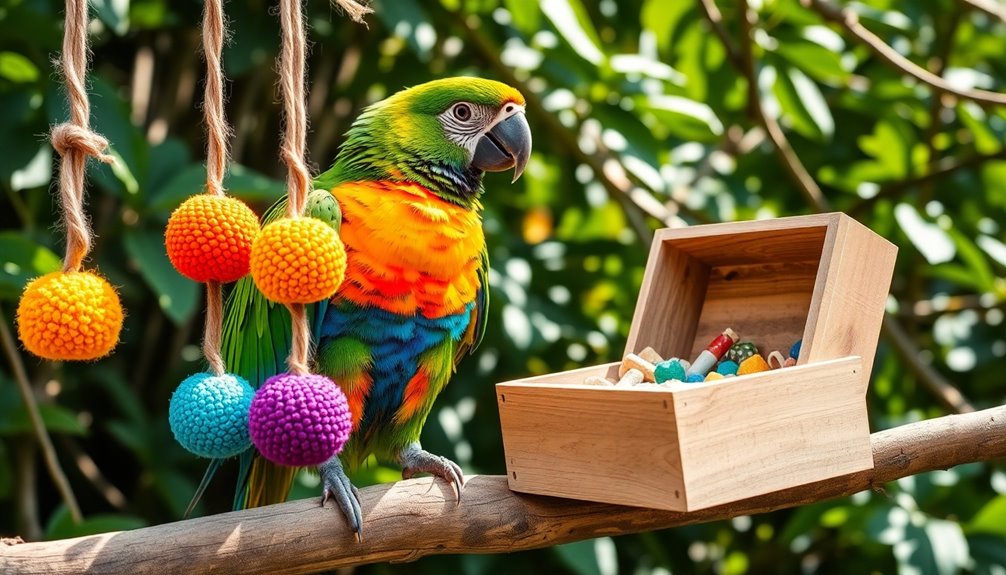
Engaging your parrot in foraging activities can greatly enhance their mental and physical well-being. By using effective foraging techniques, you can stimulate their natural instincts to search for hidden treats. Simple methods like hiding goodies in shredded paper or utilizing woven basket toys can create exciting treasure hunts that mimic how they'd forage in the wild.
Incorporating a variety of textures and materials in these activities adds to the sensory engagement, making the experience even more appealing for your bird. Consider rotating your foraging activities regularly, using different containers or hiding spots to keep things fresh. This approach helps prevent boredom and encourages ongoing interaction with the toys.
Additionally, implementing a reward system can considerably boost your parrot's motivation. As they gradually discover treats, they not only feel accomplished but also enhance their problem-solving skills. This ongoing challenge promotes mental engagement and keeps their minds sharp.
Maintenance of Foraging Toys
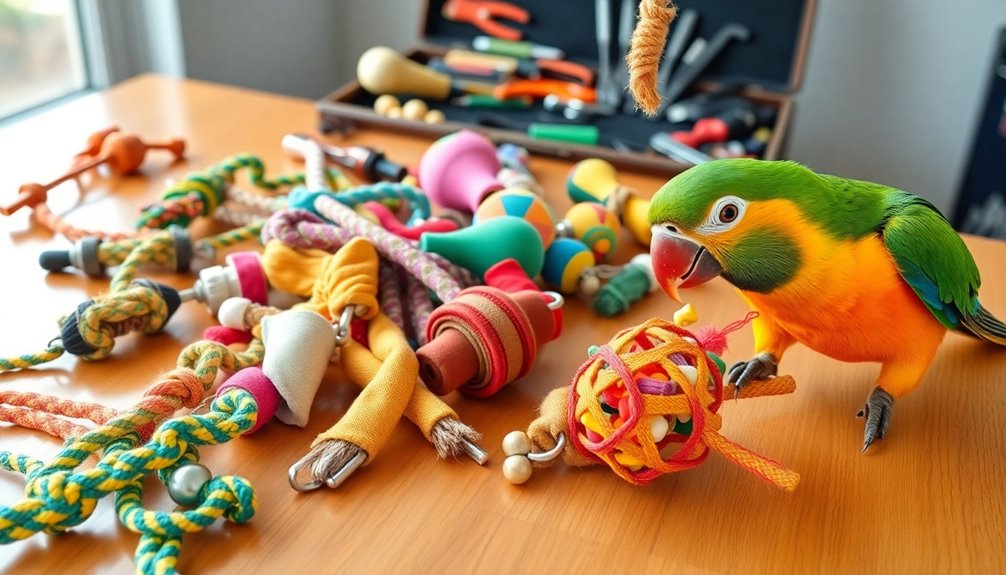
To keep your parrot safe and engaged, you'll want to regularly inspect and clean their foraging toys. Rotating their selection not only prevents boredom but also encourages them to explore new challenges. Let's look at some effective guidelines for maintaining these important playthings. Additionally, incorporating pet-friendly fabrics in their environment can help reduce wear and tear on their toys. Regularly inspecting toys for wear and tear ensures safety and longevity, allowing for a more enriching play experience for your bird.
Regular Inspection Guidelines
Keeping your parrot's foraging toys in top shape is essential for their safety and enjoyment. Regular inspections help you catch any issues before they become a problem.
Here are some guidelines to follow:
- Inspect for signs of wear and tear, like fraying, cracks, or broken components.
- Check for small parts that could pose a choking hazard if they loosen or detach.
- Rotate and replace toys that show excessive wear to keep your bird engaged.
- Monitor your bird's interactions with new toys to guarantee they're safe and suitable.
- Clean toys frequently to prevent bacteria and mold buildup.
Cleaning and Hygiene Practices
Maintaining cleanliness and hygiene for your parrot's foraging toys is vital to their health and well-being. Regularly inspect these toys for any wear and tear, and replace any damaged items immediately to prevent potential injuries.
You should also clean foraging toys frequently using bird-safe disinfectants. This practice helps maintain hygiene and prevents the growth of mold or bacteria that could harm your bird.
Verify all materials used in foraging toys are non-toxic and safe for birds. Avoid any finishes or components that may pose health risks.
By rotating and varying the foraging toys, you keep your parrot engaged while minimizing the buildup of bacteria or odor from prolonged use of the same items.
When not in use, store foraging toys in a clean, dry area to prevent contamination. This will help guarantee they remain in good condition for your bird's enjoyment.
Rotating Toy Selection
Regularly rotating foraging toys not only keeps your parrot engaged but also prevents boredom in their environment.
Variety is key to stimulating their natural curiosity and encouraging exploration. To maintain an enriching atmosphere for your feathered friend, consider the following tips:
- Rotate toys every few weeks to mimic natural behavior patterns.
- Introduce new toys based on seasonal changes or your bird's evolving preferences.
- Inspect for wear and tear before rotation to guarantee safety and avoid injury.
- Observe interactions with different toys to create a feedback loop for future selections.
- Maintain a balanced mix of toys that promote both mental and physical exercise.
Recommended Foraging Toys for All Levels
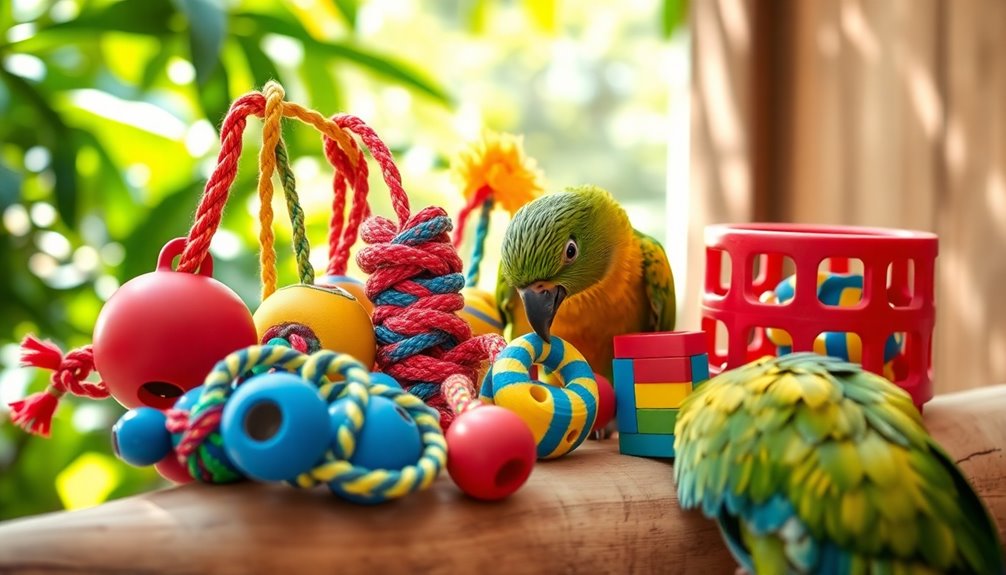
When it comes to selecting foraging toys for your parrot, you'll find a variety of options that cater to every skill level. For beginners, the mini cauldron is perfect for introducing foraging concepts. These small, 2.25-inch cauldrons come in packs and are easy to refill with treats, making them a great choice to spark interest.
As your bird progresses, consider the Busy Barrel. This solid aluminum toy promotes problem-solving skills as your parrot works to retrieve hidden treats, providing excellent mental stimulation.
For more advanced foragers, the EleWaiter offers a unique challenge with multiple shelves that require effort to access treats, ideal for medium to large birds.
If you have a medium-sized bird, the Foraging Freddie is a fantastic option. This coconut half filled with goodies mimics natural foraging behavior, encouraging your parrot to explore.
For those with African Greys or Amazons, the Super Bird Creations Four Way Forager features four clear acrylic cups that need manipulation to reveal the rewards.
With these recommended foraging toys, you'll keep your feathered friend happily busy and mentally engaged!
Frequently Asked Questions
Is Foraging Good for Parrots?
Yes, foraging is great for parrots! It taps into their natural instincts, keeping them mentally engaged and physically active.
When you provide foraging opportunities, you're not just preventing boredom; you're also reducing anxiety and promoting overall well-being. Your bird learns to solve problems and explore its environment, which boosts its cognitive skills.
Regularly changing up the foraging activities will keep your parrot curious and interested, making it a happier, healthier companion.
What Keeps Parrots Entertained?
Did you know that parrots can spend up to 80% of their waking hours foraging in the wild?
To keep your feathered friend entertained, you need to mimic this natural behavior. Offer a variety of engaging activities like puzzle feeders, hanging toys, and interactive gadgets.
Switching up the toys regularly keeps things fresh and exciting. By doing this, you'll not only stimulate their minds but also promote physical activity and overall happiness.
Why Are Foraging Toys Good for Birds?
Foraging toys are great for birds because they stimulate their natural instincts and keep them mentally engaged.
When you offer these toys, you encourage your parrot to search and problem-solve, which promotes cognitive development.
Plus, they help reduce boredom and anxiety, leading to a happier, healthier bird.
Regular interaction with these toys also provides much-needed physical exercise, contributing to your parrot's overall well-being and longevity.
What Type of Toys Do Parrots Like?
Parrots love toys that challenge them and engage their natural instincts.
They're drawn to puzzle feeders and toys that require manipulation to access treats.
You'll find they enjoy chewing on safe materials like wood and paper, which keeps them entertained.
Introduce a variety of toys to maintain their interest, and include different textures for added sensory stimulation.
Conclusion
Incorporating foraging toys into your parrot's routine can transform their playtime and enrich their lives. Did you know that studies show parrots can spend up to 60% of their waking hours foraging in the wild? By mimicking this natural behavior at home, you help keep your feathered friend mentally stimulated and physically active. So, whether you choose commercial options or get creative with DIY projects, your bird will thrive and stay happily busy!

